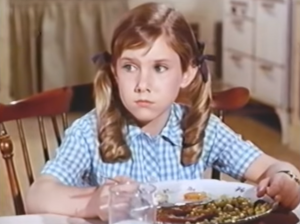 High blood pressure (hypertension) increases the risk of dangerous health problems, such as heart attacks and strokes. Doctors measure blood pressure using two numbers, such as 120/80. The first number shows the surge of pressure in the arteries with every heart beat, and the second number shows the pressure between beats. If either one of these numbers is too high, blood pressure can be dangerous.
High blood pressure (hypertension) increases the risk of dangerous health problems, such as heart attacks and strokes. Doctors measure blood pressure using two numbers, such as 120/80. The first number shows the surge of pressure in the arteries with every heart beat, and the second number shows the pressure between beats. If either one of these numbers is too high, blood pressure can be dangerous.
Bringing blood pressure under control is very important, and treatment often involves taking medication. However, changing the way you eat can bring you blood pressure down and may help reduce the need for medication.
What can you do to control your blood pressure? For starters, reduce salt in your diet. Cutting down on salt helps reduce blood pressure. You can do this by:
- Using less and less salt in cooking. Your taste will soon adjust.
- Avoiding adding salt to foods at the table.
- Avoiding salty snacks, such as potato chips.
- Avoiding canned foods with added sodium (salt).
- Choose low-sodium (low-salt) varieties of canned soups and vegetables, or fresh or frozen vegetables which are naturally low in sodium.
- Limit foods that are packed in brine, such as pickles and olives, and high sodium condiments, such as soy sauce, ketchup, mustard, and barbecue sauce.
Read the “Nutrition Facts” label. The amount of sodium (salt) in a food product is listed on the nutrition facts label. The following label claims can be placed on a food package which will tell you if the product is low in salt:
- Low Sodium—contains 140 mg or less sodium per serving
- Very Low Sodium—contains 35 mg or less sodium per serving
- Sodium Free—contains less than 5 mg of sodium per serving
Switch to a vegan diet. Cutting out meat, dairy products, and added fats reduces the blood’s viscosity (or “thickness”) which, in turn, brings down blood pressure. Plant-based foods are generally lower in fat and sodium and have no cholesterol at all. Vegetables and fruits are also rich in potassium, which helps lower blood pressure.
 The following foods are naturally low in sodium:
The following foods are naturally low in sodium:
- Whole grains—brown rice, whole wheat bread or pasta, unsweetened hot or cold cereal, millet, barley, buckwheat groats, and quinoa
- Beans/legumes—dried (not canned) black-eyed peas, kidney beans, pinto beans, lentils, navy beans, chickpeas, textured vegetable protein, and tofu
- Vegetables—fresh or frozen varieties, such as broccoli, mustard greens, collard greens, kale, spinach, carrots, potatoes, tomatoes, squash, and corn
- Fruits—fresh or frozen varieties, such as bananas, oranges, apples, pears, grapefruit, strawberries, mango, papaya, guava, strawberries, and blueberries
Lower your weight. Avoiding fatty foods, such as animal products and fried foods, and increasing the use of whole grains, vegetables, fruits, and beans helps reduce weight. In turn, this helps bring down blood pressure. As an added benefit, losing weight reduces your risk of diabetes, heart problems, joint problems, some cancers, and other conditions. If you have a significant weight problem, be sure to consult with your doctor about the best ways for you to lose weight.
 Limit alcohol use. Alcohol can raise blood pressure and it helps to limit alcohol to no more than one to two drinks per day (beer and wine count as drinks).
Limit alcohol use. Alcohol can raise blood pressure and it helps to limit alcohol to no more than one to two drinks per day (beer and wine count as drinks).
Become more physically active. Exercise can help bring down your blood pressure. A typical healthy exercise schedule would include a brisk walk for a half-hour each day or one hour three times per week. Since exercise puts added strain on your heart, be sure to check with your doctor first about the best way for you to become more physically active.
Avoid tobacco. There are many good reasons to quit smoking, and healthier arteries is one of them.
Let your doctor know you are concerned about your blood pressure and want to use foods to help bring it under control. High blood pressure is dangerous, so, let your doctor guide you as to when and if your need for medication has changed.

